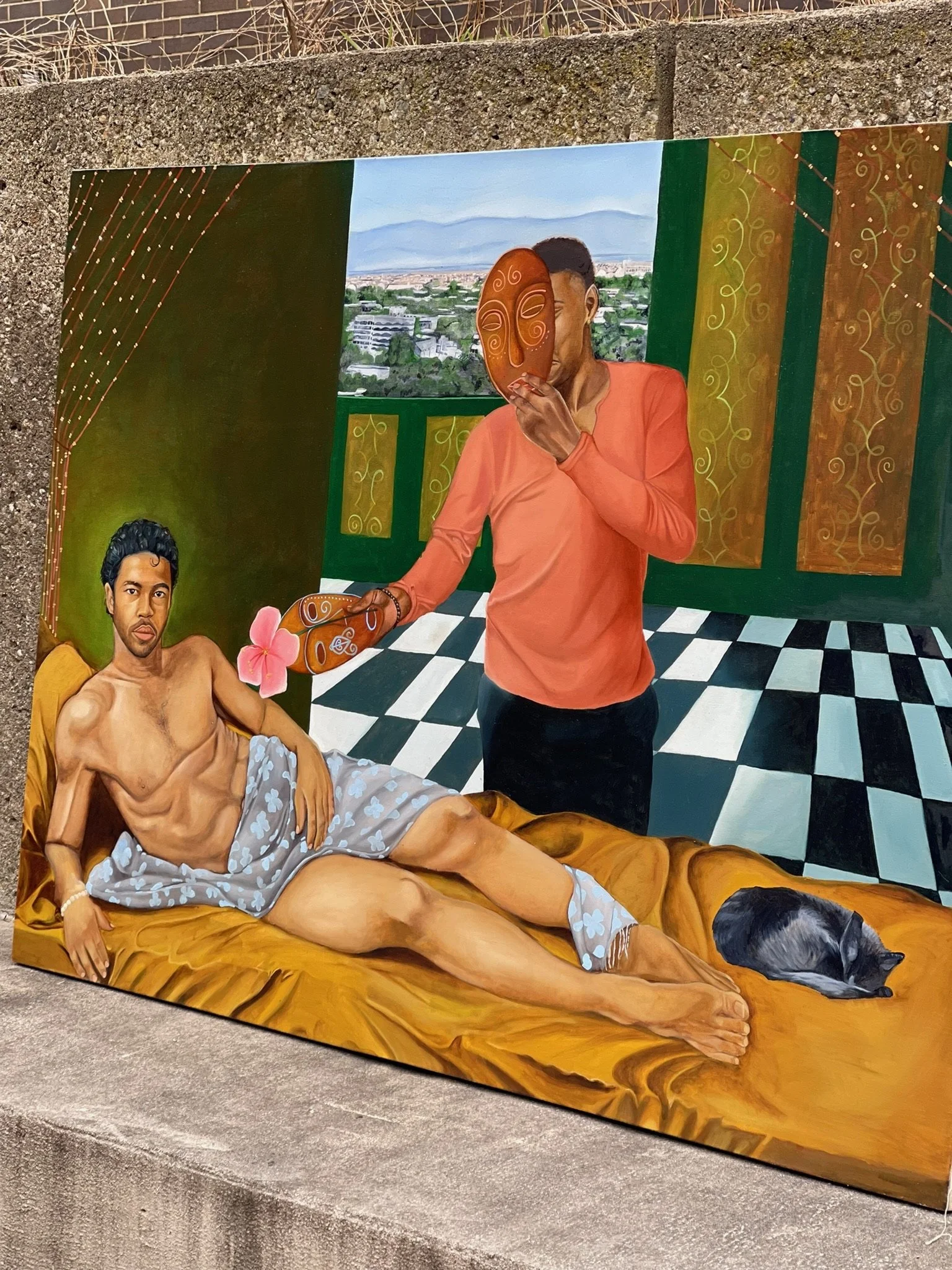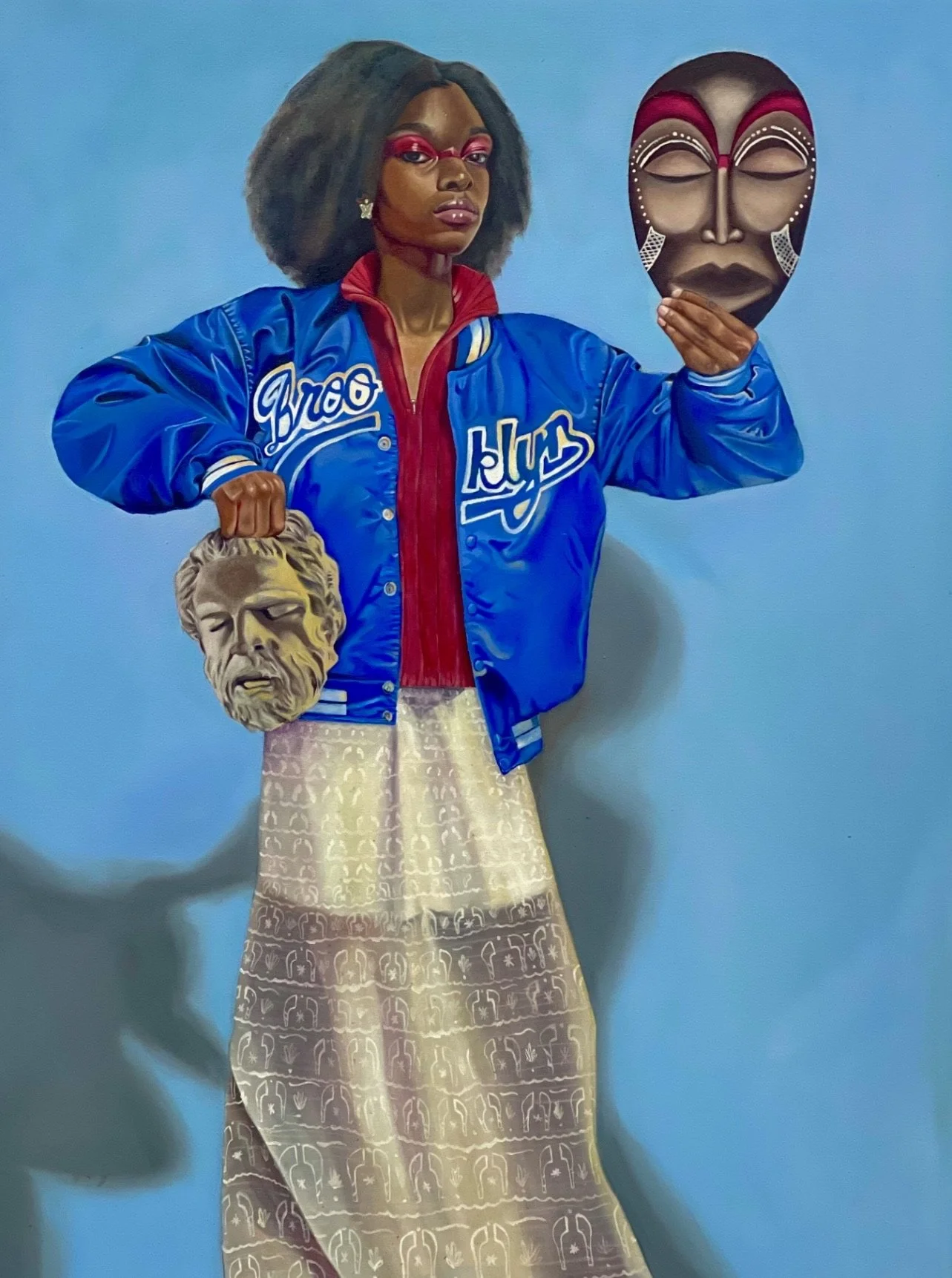Artist Statement
Storytelling is one of the most important forms of connecting and understanding the world around us. In telling stories of Black and Brown bodies, themes of identity, nationality, trauma, beauty, and society emerge. I paint compositions that symbolize life experiences but exist in fantasy. For instance, In my piece titled Venus of Hispaniola, there lies a young man on bed with a floral embellished cloth draped over his body exposing some parts of him. Hovering over him is another young man who hands him a flower and a mask as he too holds another mask up to his face. They both exist in a living space with green walls and checked tiles; outside the window of this space lies Hispaniola the birthplace of the two men. Although they are from opposite ends of the island that exist as two separate worlds, they find themselves together in the space of love. In creating this piece, I wanted to tell a story; one of romance and the historical relationship between Haiti and the Dominican Republic. While creating these compositions; it is important for me to not only understand the technical efforts that made them so dynamic but to understand the nuance of these pieces that have systematic impacts in the way we dissect the world around us.
Patterns and textiles then take a leading role in the work, allowing me to dive into the world of fashion; employing the traditions of West African culture; specifically, the important role that fashion plays in Nigerian culture. It becomes a pathway that allows me not only to elaborate on a piece of clothing but the individual. The various rhythms and patterns can then be used to symbolize beauty; elaborate on the stories and narratives; and offer up a special making that is prevalent in almost every piece. In "After the beheading", the woman sports a white lace skirt decorated with the motif of the Edo ceremonial sword. The sword, symbolizing power, authority, and strength in the Edo culture, is showcased in the painting as she holds up a metaphorical sword: The mask, another important symbol in Edo culture. I use bright and saturated colors to emphasize the color palettes used in many West African textiles. I use floral patterns to symbolize beauty in the composition. I believe every aspect of our lives, even the most traumatic, can be showcased in embellished and stunning ways; ways that allow us to reflect and appreciate all that life ushers. Every moment that led up to creating these pieces was a moment of reflection and realization with every brushstroke bringing healing and understanding.
I create images; typically of Black bodies rendering friends, family, and other subjects from photographs each exploring elements of individuality and heritage. The emphasis on Black and Brown bodies is crucial, not only because of my heritage as a Nigerian-American but the opportunity to tell stories of the people who look like me, which are often erased or ignored in an art industry led by the continental ideologies of western art history. In representing Black and Brown bodies, I work to fashion a new idea of what it means to be Black or Brown in the type of stories I choose to imagine. Stories that often feel impossible for people who look like me to experience. Oftentimes, narratives of Black, Brown, and Indigenous people are rooted in trauma. My work gives way to seeing people of color beyond that language by introducing alternate realities where those traumatic languages may not exist. Although these alternate realities exist in total fantasy, they ultimately find a place that feels futuristic. It is unfamiliar but obtainable. With the addition of African symbols and urban styles, my work adopts an Afrofuturist aesthetic. This aesthetic is translated even further with the heavy use of textiles and patterns inspired by the West African patterning techniques.

